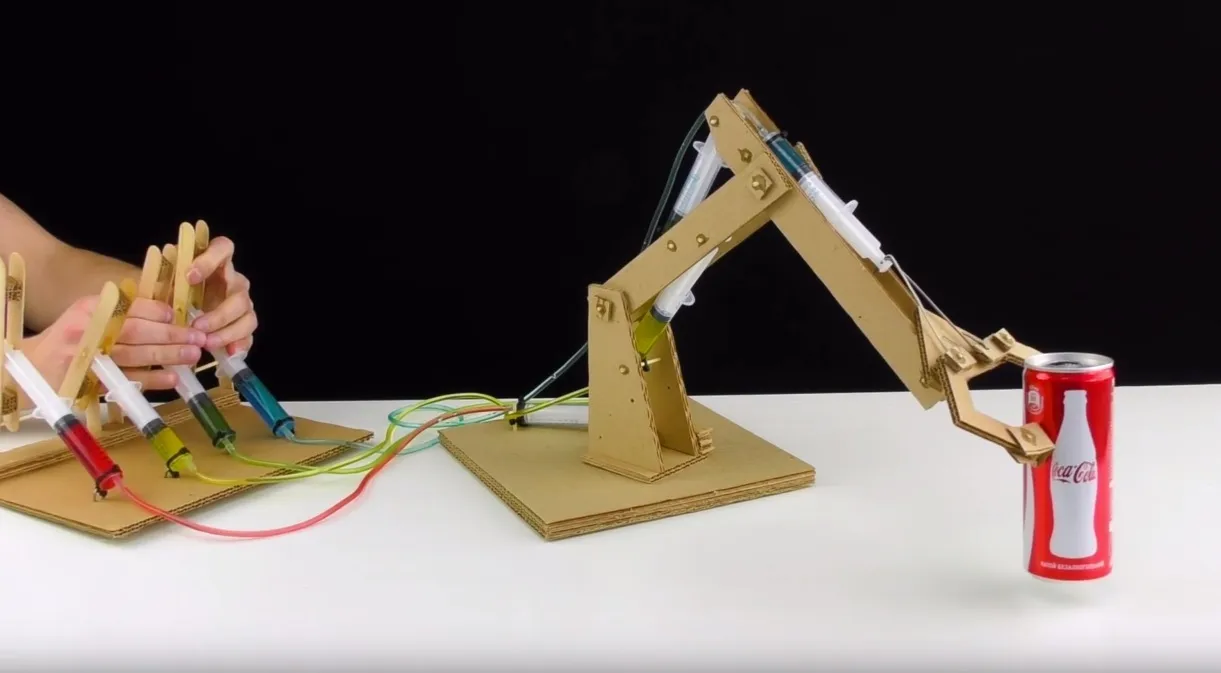One of the most rewarding things you can do at home is build a mechanical device. Whether you’re a beginner or a seasoned novice, mechanical DIY projects can help you learn how things move, connect, and work. It’s not enough to just build; these projects allow you to learn, solve problems, and see real progress.
The best thing about mechanical projects is that they combine imagination with practicality. You can buy many of the materials needed for these projects cheaply at the grocery store or at home. You can use anything from rubber bands and paper to gears and motors. The only limiting factor is your own ideas.
Mechanical projects are also fun for families, students, and anyone who wants to relax on the weekend and make something real. With each project you complete, you’ll also feel more confident in your skills and learn more about how tools work in the real world.
Start with simple machines and everyday objects
If you’re just starting out, try projects that use simple concepts like motion and force. A rubber band powered car is one of the easiest things you can make. You can make a small car that moves forward when you let go of a twisted rubber band. You use rubber bands to attach bottle caps to a cardboard frame so that they act as wheels. This will teach you the basics of storing energy and moving objects.
The table catapult is also a fun project. You can use popsicle sticks, a spoon, and rubber bands to make a gadget that can launch small objects. In this gadget, you can see how levers, tension, and projectile motion work in real life.
As you gain confidence, you can try making gadgets with gears. This simple gear system can be made using cardboard and a kebab skewer. It shows how force and rotation change as the size of the gears changes. By observing the gears, you can learn how energy moves and how you can change the speed or force.
You don’t need any special tools or complicated materials to make these simple creations, and they’ll help you understand the basics of mechanics. The beauty of it is how easy it is to make practical models using everyday objects.
Moving on to electrical projects
Once you’ve mastered the basics, you can start using small motors and batteries in your projects. You can learn about circuits, switches, and motion control with a simple electric car or a battery-powered fan.
For example, a small motor, a toothbrush head, and a coin cell battery can be used to make a surprisingly buzzing robot. When the motor is turned, it shakes to make the robot move across a flat surface. This not only teaches the basics of electrical wiring, but also shows how friction and imbalance can make things move.
You can also use a cardboard box, wire, and a small DC motor to make a pulley-driven elevator. This example shows how pulleys make lifting easier and the importance of balance and counterweights.
When you later add a microprocessor like an Arduino to your motorized project, you can try controlling speed, changing direction, and even doing some simple automation. For those just getting started with electronics and robotics, these little creations are a great way to get started.
Useful Mechanical Projects
Building things with metal isn’t just fun, it can be useful. For example, with a few cardboard wheels, gears, and a hand crank, you can build an electric paper towel holder. Not only will you learn how gears work, but you can also use it in the kitchen or on the patio.
A coin sorter made from cardboard and tubes of varying thicknesses demonstrates how coin size and flow direction work. This is a fun way for kids to learn about function, design, and measurement.
Another useful project is building your own mechanical clock or timer. You can use a few simple gears, weights, and a pendulum to build a timekeeper that is powered by motion and gravity. Although it takes more time, this project is well worth the effort and you will learn a lot about mechanical timekeeping and harmonious motion.
As you build practical tools, you will discover how to apply simple engineering ideas to solve real-world problems. When you understand this, your work is not just a project, but a unique answer.
Overview Table: Easy Mechanical Projects for Beginners
It is easy to make things at home. Here are some project ideas, teaching materials:
| Project Name | Main Concept Learned | Materials Needed |
|---|---|---|
| Rubber Band Car | Stored energy, rolling motion | Cardboard, rubber band, bottle caps |
| Desktop Catapult | Leverage, tension, motion | Popsicle sticks, spoon, rubber bands |
| Simple Gear Mechanism | Torque, gear ratios | Cardboard, skewers, glue |
| Vibrobot (Wobblebot) | Vibration, DC motor basics | Toothbrush head, motor, coin battery |
| Pulley Elevator | Lifting force, balance | String, cardboard, small DC motor |
| Coin Sorter | Sizing, sorting, channels | Cardboard, scissors, tape |
| Manual Towel Dispenser | Gear-driven motion | Tubes, rollers, cardboard |
| Pendulum Timer | Gravity, oscillation | String, weights, cardboard gears |
This chart summarizes what each project teaches while giving you an idea of the materials you’ll likely already have at home.
Frequently Asked Questions
Do I need special tools to start building mechanical projects at home?
Not necessarily. Most beginner projects require only basic items like scissors, glue, rubber bands, cardboard, and tape. As you progress, you might want tools like a glue gun, cutting mat, or small drill, but they’re not essential for getting started.
Are these projects safe for kids?
Yes, most of the simple mechanical projects listed here are safe for children, especially with adult supervision. They’re great for introducing concepts like motion, force, and energy in a fun and hands-on way.
Can I build these without prior engineering experience?
Absolutely. These DIY projects are designed for beginners and hobbyists. They are simple enough to understand, and each project teaches basic mechanical principles in a visual, interactive way.
Where can I find motors and small parts?
Small DC motors, coin batteries, and electronic parts are available online and at electronics or hobby stores. You can also salvage parts from old toys, electric toothbrushes, or broken gadgets.
How can I make my project more advanced?
Once you’ve built a few mechanical models, you can enhance them by adding electrical circuits, sensors, or even microcontrollers like Arduino. These upgrades allow you to add automation, remote control, and interactive features.
What’s the biggest benefit of building mechanical projects at home?
Beyond learning, these projects help you develop problem-solving skills, creativity, and hands-on experience with mechanical systems. They also offer a sense of accomplishment as you bring motion and function to life with everyday materials.


I loved aas much as you will receive carried out right here.
The sketch is tasteful, your authored subject matter stylish.
nonetheless, you command get bought an shakiness
over that you wish be delivering the following.
unwell unmquestionably come more ormerly again since exactly the same nearly very often inside case you
shield this increase. http://Boyarka-Inform.com/